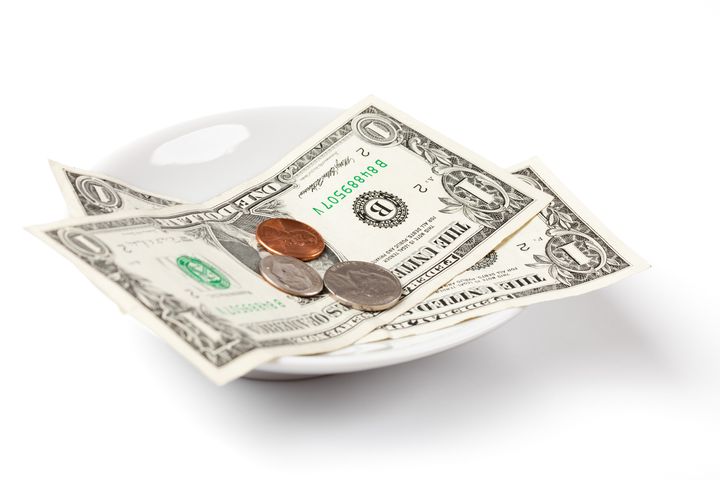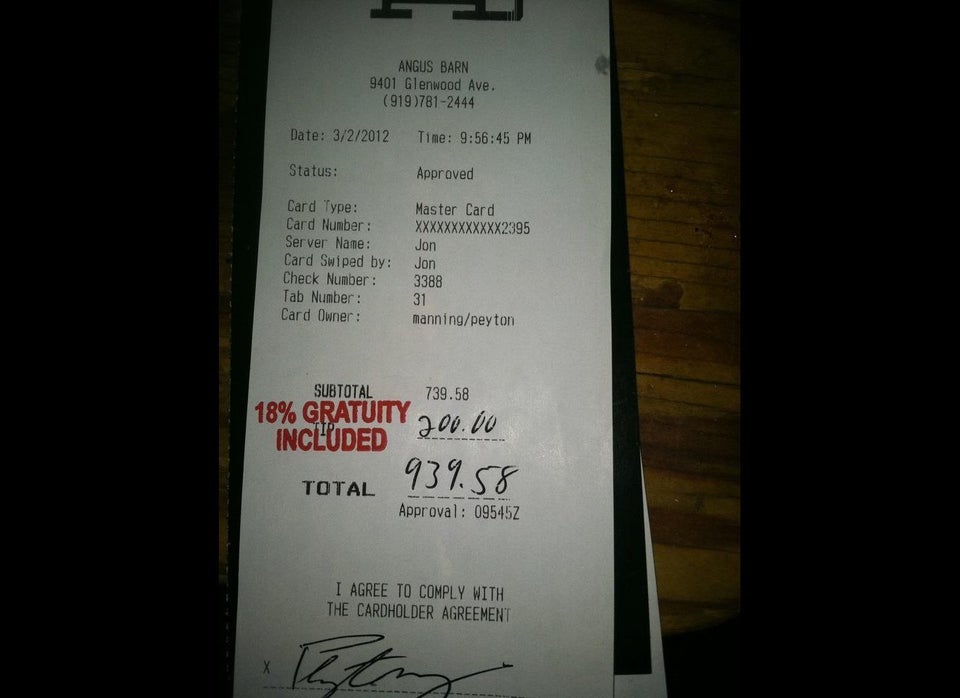
I usually pack a lunch for work every day to save money, but when a friend asked if I wanted to meet at a nearby restaurant, I decided to skip my turkey sandwich and agreed to meet him. My budget allows for one cheap meal a week, so I got the lunch special, and drank water to keep my bill under $10.
When we got our checks, I watched my friend scribble the customary $2 tip for the cost of his meal. My total was $7.60 with tax. I started to tip the same amount, but then I looked over at his half-empty Diet Coke and stopped. My friend’s total was a couple of dollars more because he had a drink, so his tip was a few cents over 20 percent of the cost. I was planning to leave the same amount out of habit when I realized that mine should be less. Standard tips are based on a percentage of the bill, and people tack on more for exceptional service. I had chosen tap water over sweet tea so that my bill would be lower. Now I was going to tip the same amount of my friend who ordered more? This didn’t seem fair to me.
So, I calculated 20 percent of my bill on the customer copy of the receipt, and decided to leave the exact amount: $1.52. I had only saved 48 cents, but I felt like a money-saving genius. How many times had I left more than what is customary just because I didn’t want to do the math? Here was a way to save that I had completely overlooked in my efforts to cut costs.
Over the course of a year, if I ate a similarly priced meal once a week and paid the exact tip each time, I would save almost $25. Those meager-sounding savings would pay for two more meals with drinks.
After my discovery, I did some research to see what tipping experts had to say about it. According to the Emily Post Institute, tips should be calculated before tax. That had never occurred to me, but it makes sense. I’m paying a percentage on the meal I just bought, not the sales tax on it. Discounts and coupons are subtracted before tax, so anything added to the bill should be, too. The pretax tip for my recent lunch would have been $1.30. I would’ve saved 70 cents over my usual $2 tip, making my yearly savings nearly $40.
I also read that 15 percent is customary for adequate service, and 20 percent should be the minimum for good service. I’ve always left 20 percent no matter what kind of service I got because it seemed like the right thing to do. If I get great service from a waiter who is attentive without being overbearing, I’ll leave more. The same applies when I’ve asked a lot of the server and he or she was accommodating with my requests.
I like to save money when I can, but leaving a poor tip, or worse, not tipping at all, will probably have its consequences, especially if I visit the restaurant frequently. I’d never leave less than 15 percent, even for poor service. I’d rather shell out the money, and avoid securing that special place in hell for people who don’t tip at all.
Another interesting suggestion is that you don’t have to leave tips when you’re getting take out or buying coffee. I’ve always felt obligated to drop something in those sad little tip jars cafes and restaurants keep by the register, but it’s not necessary. The cashiers are probably not being paid tipped wages, which are far less than the hourly wage of a regular employee, so they aren’t relying on tips to make up the difference.
The guidelines also mention how to tip at a bar: Standard practice is that bartenders should be tipped $1 or 2 per drink when paying with cash. I’ve always followed the cash-only rule when I’m out drinking, because I thought having a bar tab would make it easier to run up a bill I’d regret in the morning. But paying with cash may end up costing me more. Opening a can or bottle is not as complicated as making a mixed drink, but I knew from experience that if I didn’t tip the bartender when he handed me a PBR, he’d ignore me the rest of the night. I always felt cheated because that dollar for each trip to the bar could’ve gone towards at least one good beer.
The same 15 to 20 percent tip applies to the whole bill if I’m not paying on a per-drink basis, so I could avoid the awkwardness with the bartender and save money by opening a tab. If I have four $3 beers and pay a $1 tip in cash each time, I will have spent $16. If I keep a tab and pay one gratuity, my tip would be $2.40. That’s a savings of $1.60. If I go out once a week, in one year, that’s over $80, which would afford me a few more nights out drinking good beer.
There’s no shame in trying to save a few cents on lunch or when you’re out drinking, especially if you’re on a budget, but don’t want to give up hanging out with friends. Tipping the exact amount can even be a little secret between you and the waiter. Pull up the calculator on your phone to get the correct amount and use your debit card so you won’t need change. Most waiters are probably used to rounded numbers, so write the amount clearly on the receipt. Check your bank account to make sure the correct amount was deducted, and then watch the change add up.
